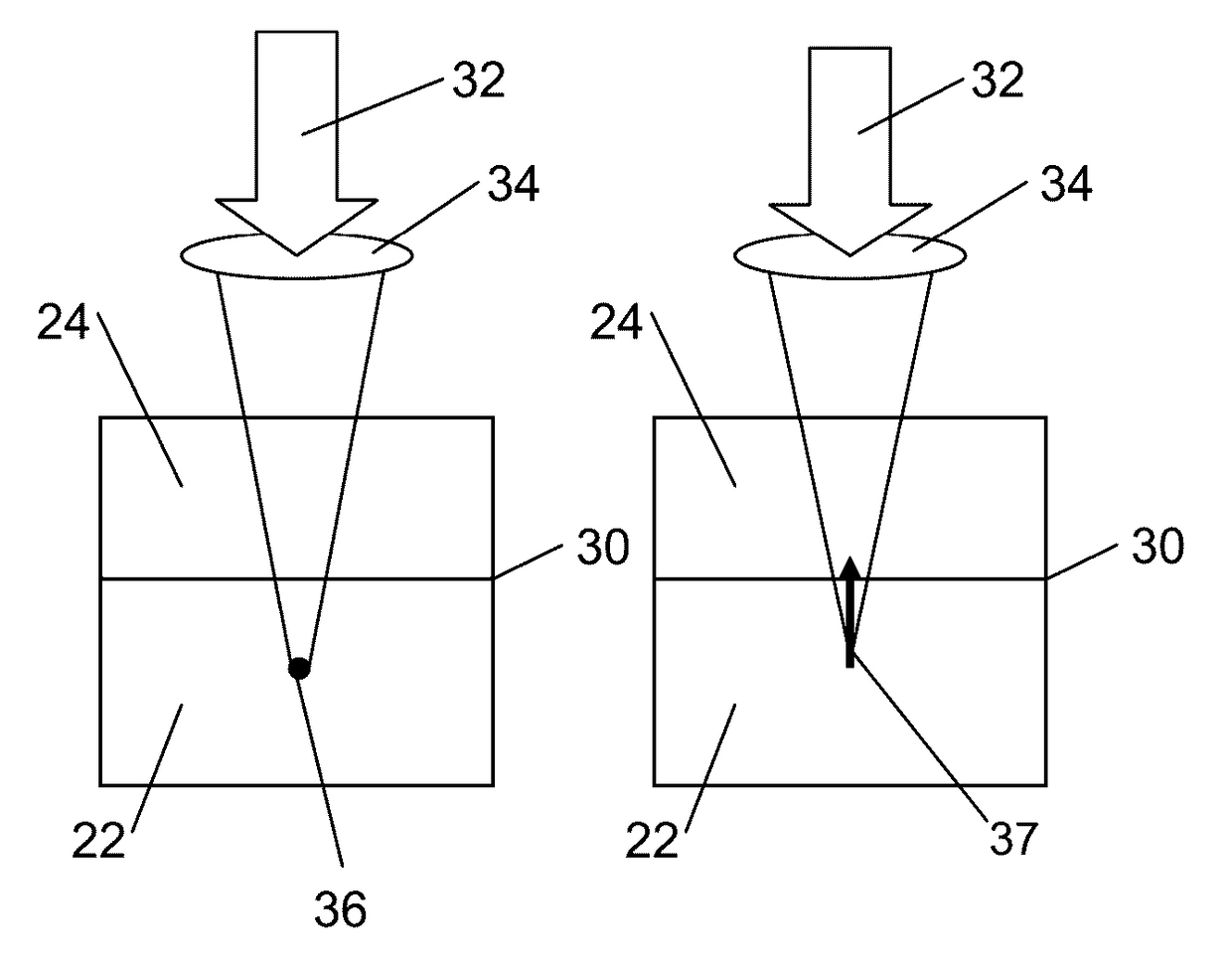Laser reinforced direct bonding of optical components
a technology of optical components and lasers, applied in the field of assembly of optical components, can solve the problems of insufficient mechanical strength of the bonding surface, altering the optical properties affecting the performance of the resulting assembly, so as to achieve precise and local manner, and negligible alteration of the optical transmission properties.
- Summary
- Abstract
- Description
- Claims
- Application Information
AI Technical Summary
Benefits of technology
Problems solved by technology
Method used
Image
Examples
Embodiment Construction
[0052]In accordance with one aspect of the invention, there is provided a method for joining together a first and a second optical component, each of the first and second optical components having a respective bonding surface.
[0053]It will be understood by those skilled in the art that the optical components that can be joined together by the method according to this aspect of the invention may be made up of any solid, non-plastically deformed material, provided that at least the first optical component is substantially transparent to the wavelength of the laser. As long as this requirement is fulfilled, each of the first and second optical components may thus be made up of single elements (e.g. Si, Ag, Al), compounds or organic compounds. Typical non-limiting examples of such compounds are glasses, crystals, metals, semiconductors, polymers and organic polymeric compounds such as polycarbonate, polytetrafluoroethylene (known under the trademark Teflon), and the like. It is an advan...
PUM
| Property | Measurement | Unit |
|---|---|---|
| surface roughness | aaaaa | aaaaa |
| surface roughness | aaaaa | aaaaa |
| wavelength | aaaaa | aaaaa |
Abstract
Description
Claims
Application Information
 Login to View More
Login to View More - R&D
- Intellectual Property
- Life Sciences
- Materials
- Tech Scout
- Unparalleled Data Quality
- Higher Quality Content
- 60% Fewer Hallucinations
Browse by: Latest US Patents, China's latest patents, Technical Efficacy Thesaurus, Application Domain, Technology Topic, Popular Technical Reports.
© 2025 PatSnap. All rights reserved.Legal|Privacy policy|Modern Slavery Act Transparency Statement|Sitemap|About US| Contact US: help@patsnap.com



